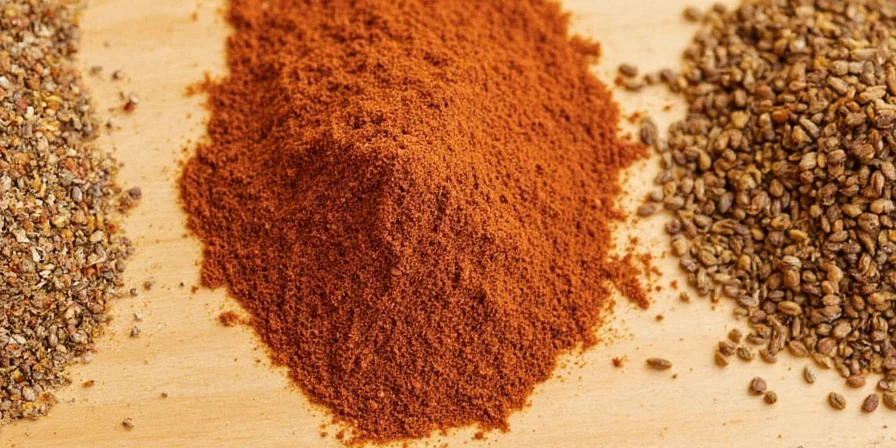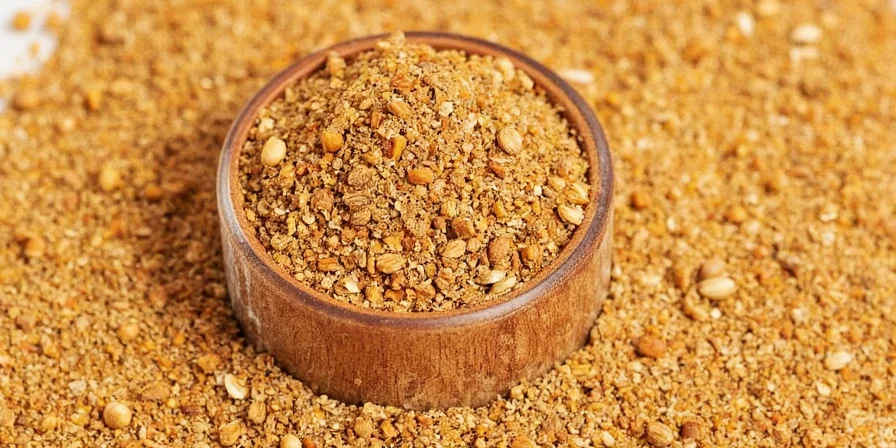Ground mace is the often-overlooked spice that professional chefs reach for when they want to elevate dishes beyond what nutmeg can achieve. Unlike nutmeg, mace delivers a brighter, more complex flavor profile with subtle floral notes and peppery warmth that cuts through rich sauces and enhances delicate desserts. This practical guide reveals exactly how to use ground mace in cooking—when to choose it over nutmeg, proper measurements, storage methods, and specific applications that transform ordinary meals into extraordinary experiences. Discover why mace is the secret weapon in professional kitchens and how you can harness its unique properties for better results at home.
Table of Contents
- What Exactly Is Ground Mace?
- Mace vs. Nutmeg: Key Differences at a Glance
- What Does Ground Mace Taste Like?
- How to Use Ground Mace in Cooking (With Exact Measurements)
- Why Professional Chefs Prefer Mace for Specific Dishes
- 7 Practical Tips for Best Results
- How to Store Ground Mace for Maximum Freshness
- What to Look for When Buying Ground Mace
- Frequently Asked Questions
- Conclusion: Unlock Mace's Culinary Potential
What Exactly Is Ground Mace?
Mace comes from the Myristica fragrans tree as the vibrant reddish lacy covering (aril) surrounding the nutmeg seed. After harvesting, this delicate membrane is air-dried until brittle and ground into fine powder. While nutmeg provides warm sweetness, mace delivers a more complex flavor profile with citrusy top notes and subtle floral undertones that work magic in both savory and sweet dishes. Understanding this distinction is key to using mace effectively in your cooking.

Mace vs. Nutmeg: Key Differences at a Glance
Choosing between mace and nutmeg makes a significant difference in your final dish. Mace offers sharper, brighter flavor notes that cut through rich sauces, while nutmeg provides foundational warmth better suited for sweeter applications. The critical practical difference: mace is approximately twice as potent as nutmeg, so you need less of it in recipes.
| Feature | Mace | Nutmeg |
|---|---|---|
| Source | The aril surrounding the nutmeg seed | The actual seed inside the aril |
| Flavor Profile | Brighter, more peppery, with citrus and floral notes | Sweeter, earthier, more mellow warmth |
| Potency | Stronger flavor; use ½ the amount of nutmeg | Milder; can be used more generously |
| Best For | Creamy sauces, tomato dishes, light-colored sauces, delicate desserts | Baked goods, custards, holiday drinks, hearty stews |
What Does Ground Mace Taste Like?
Mace delivers warm notes of cinnamon and clove with distinctive peppery undertones and a subtle floral finish. In savory dishes, it adds sophisticated depth without dominating—ideal for balancing acidity in tomato sauces or enhancing umami in mushroom dishes. When used in desserts, it creates that 'something special' effect that makes guests wonder about your secret ingredient, providing complexity that pure nutmeg can't match. The key difference from nutmeg: mace provides top-note brightness while nutmeg offers base-note warmth.

How to Use Ground Mace in Cooking (With Exact Measurements)
For best results, use these precise guidelines when substituting mace for nutmeg or incorporating it into recipes:
- Basic substitution: Replace nutmeg with half the amount of mace (½ tsp nutmeg = ¼ tsp mace)
- Meat Rubs: Combine ¼ tsp ground mace with 1 tsp smoked paprika and ½ tsp coriander for 4 lamb chops
- Stews & Curries: Add ⅛ tsp ground mace during the last 15 minutes of cooking per 4 servings
- Baking: Use ⅛ tsp ground mace instead of nutmeg in apple pie fillings for 8 servings
- Soups: Stir ⅛ tsp into creamy squash soups for 4 servings just before serving
- Custards: Infuse ⅛ tsp mace in warm milk for 10 minutes before making crème brûlée for 4 servings

Why Professional Chefs Prefer Mace for Specific Dishes
Professional kitchens rely on mace for specific applications where nutmeg falls short. Mace's unique chemical composition allows it to bind exceptionally well to dairy proteins, which is why French chefs add it to béchamel for layered depth that nutmeg can't replicate. Its stability at higher temperatures makes it indispensable in slow-cooked dishes where nutmeg's flavor fades. Indian cooks use it in biryanis to lift saffron notes without overpowering delicate rice dishes. When appearance matters, mace is preferred over nutmeg in light-colored sauces because it won't create specks like ground nutmeg does.
7 Practical Tips for Best Results
- Timing matters: Add mace during the last 15-20 minutes of cooking to preserve its delicate flavor notes
- Temperature control: Keep baking temperatures below 350°F (175°C) when using mace to prevent bitterness
- Acid pairing: Combine with citrus zest to amplify mace's floral notes in sauces and dressings
- Precise measuring: Always use half the amount called for nutmeg in recipes
- Revival technique: Place stale ground mace in freezer for 10 minutes to temporarily restore aroma
- For tomato sauces: Add ⅛ tsp mace per 2 cups of sauce to balance acidity without masking tomato flavor
- For custards: Always infuse mace in warm dairy rather than adding directly to prevent clumping

How to Store Ground Mace for Maximum Freshness
Ground mace loses significant flavor within 18 months when improperly stored. Maximize freshness with these practical methods:
- Store in airtight containers away from light and heat sources
- Keep away from stovetops—temperature fluctuations accelerate flavor loss
- For best results, purchase whole mace blades and grind as needed
- Store in small portions to minimize air exposure when opening container
- For long-term storage (beyond 6 months), freeze in vacuum-sealed portions
What to Look for When Buying Ground Mace
Quality indicators for ground mace:
- Aroma test: Fresh mace should release strong citrus-floral scent when container is opened
- Color: Should be vibrant orange-brown, not dull or faded
- Texture: Fine, uniform powder without clumps
- Origin: Grenadian mace offers brighter citrus notes; Indonesian provides deeper warmth
- Freshness: Look for "packed on" date rather than just "best by" date

Frequently Asked Questions
Can I substitute ground mace for nutmeg in recipes?
Yes, but use only half the amount of mace compared to nutmeg. For example, if a recipe calls for ¼ teaspoon nutmeg, use ⅛ teaspoon mace instead. Mace has a brighter, more complex flavor that can overpower dishes if used in equal amounts.
Why does my mace taste bitter in baked goods?
Bitterness occurs when mace is exposed to temperatures above 350°F (175°C). For baking, always mix mace with dry ingredients first and consider reducing oven temperature by 25°F. For best results, use whole mace blades steeped in liquids that are strained before baking.
How can I tell if my ground mace is still fresh?
Perform the 'warm palm test': Place a small amount in your palm, cover with your other hand, and breathe warm air. Fresh mace releases a strong citrus-floral aroma within 10 seconds. If the scent is weak or musty, it's stale and should be replaced.
Is ground mace safe to use during pregnancy?
In normal culinary amounts (under ¼ teaspoon daily), ground mace is generally safe during pregnancy. However, avoid consuming medicinal doses. If you have concerns, consult your healthcare provider before regular use.
Conclusion: Unlock Mace's Culinary Potential
Ground mace transforms from pantry afterthought to essential spice when used correctly. Its brighter flavor profile, better performance in light-colored sauces, and superior heat stability offer distinct advantages over nutmeg in specific applications. By following these practical guidelines for usage, storage, and substitution, you'll add that subtle 'something special' that makes people ask, 'What makes this taste so good?' Start with small amounts in your next creamy sauce or delicate dessert, and discover why professional chefs reach for mace when they want to elevate their dishes beyond what nutmeg can achieve.












 浙公网安备
33010002000092号
浙公网安备
33010002000092号 浙B2-20120091-4
浙B2-20120091-4